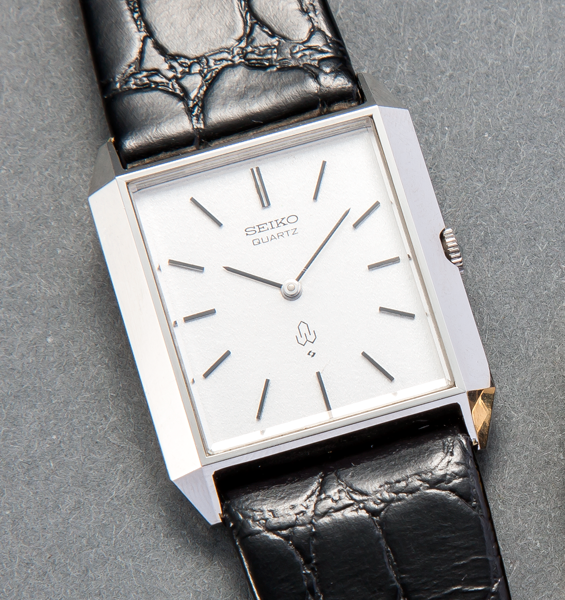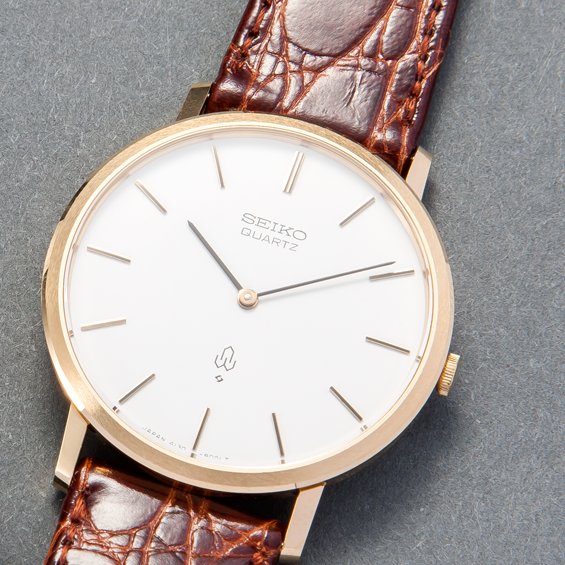The Seiko Museum
9.Two-Hand Quartz Watches: Less Is More
When Seiko brought the precision of quartz watches to the world in 1969, these timepieces were prohibitively expensive for most people, with the ground-breaking Quartz Astron costing around as much as a new car. The company thus set about making its offerings more affordable.

Pursuing Affordability and Slim Proportions
Seiko's next significant advance in quartz timepiece technology was in 1970, when it and a U.S. venture company together developed the world's first quartz watch integrating a CMOS IC. These devices deliver low power consumption and contribute to miniaturization. Seiko leveraged that IC in broadening the accessibility of quartz watches with the mass-produced Caliber 3823 in 1971. This cost considerably less than the Astron but was still quite expensive. Nonetheless, the Caliber 38 series proved quite popular. Seiko knew that it could capitalize on demand by further reducing the costs of quartz watch production. It also noticed that people were also looking for thinner movements.
One important factor in the development process was that Seiko was still in the early stages of efforts to finding ways to reduce the power consumption of quartz movements.
These considerations led Seiko to leave the seconds hand out in developing the Caliber 41 series, which it commercialized in dress watch form 1974. This was a difficult decision, as opinions were divided within the company as to how the market might react to a two-hand movement. Some worried that removing the second hand would be a step back and not forward, both technically and in business terms. But risk-taking has been part of Seiko's corporate culture since its inception, and President Kentaro Hattori was no exception. He was more than prepared to take a risk and see what the market thought.
Less Is More
The market seemed to like his decision, as the consequently slimmer movements found favor among a surprisingly large number of consumers who enthused about the "less is more" aesthetics of doing away with the seconds hand. For some, this was because they had found the seconds hand distracting. Others felt liberated from feeling the need to check that their watches were always exactly on time.

Later Progress
Throughout the remainder of the 1970s and into the 1990s, Seiko made great strides with quartz technologies that resulted in ultraslim movements that conserved far more power than earlier models.These advances eliminated part of the rationale for doing away with the seconds hand, and most Seiko watches these days, many of its dress watches included, include this hand.
There are, of course, many aficionados of seconds-hand free timepieces beyond the dress watch category, which some companies are happy to accommodate, and there are even makes of single-hand watches for those wishing to be truly different. The world of watch lovers is wondrously diverse; may it always be so.
Next Up…
In the next installment of this series about the Seiko Museum, we look at the ground-breaking Astron, a line that set the standard for quartz watches in 1969 and retains Seiko's pioneering reputation, with the latest iteration being the world's first GPS solar watch.